Menu
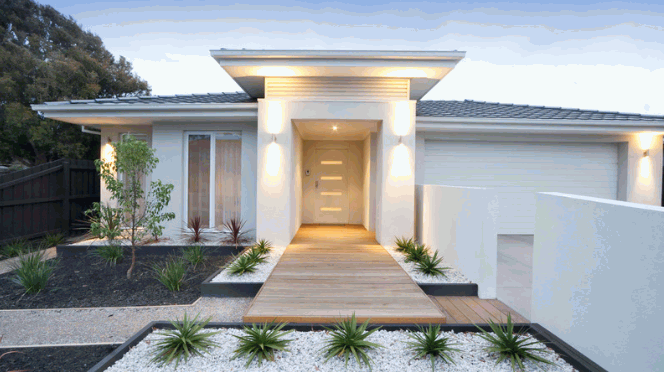
Before any cleaning process can begin, you first have to understand why the render on your external walls looks the way it does.
So if yours are green, then you're going to need to understand why your rendered walls have turned green before you start render cleaning. And the secret?
Organic growth.
And yes, it's about as unpleasant as it sounds. Still, with companies like Wash Your Walls around, you don't need to worry about dealing with these organic growths yourself. Oh no, we can handle all that for you.
But before we talk you through how we can help, let us explain why your rendered walls are suddenly suffering from green staining...
When you render walls, you expect them to protect your property and remain looking their best for years. K rend, monocouche, pebble dash - they all promise to look after our property, and that's why so many of us opt for rendered walls.
So when green stains show up all over the surfaces of our render and start ruining its aesthetic appearance, it can become pretty annoying!
And the reason for those stains? Organic growth.
Organic growth is simply a catch-all term that describes any biological matter that grows naturally outdoors. Things like algae, moss, fungi, lichen, etc.
Don't worry if you're not familiar will all of those things yet. Unfortunately, you will be by the end of today's post.
Organic growth can form naturally on rendered walls, especially if you have issues with hairline cracks where algae and other biological matter love to create a new home for themselves.
Ready to learn more about the unsightly organic growth affecting your building? Then let's get to it.
Although organic growth is the catch-all term that explains why you're suffering with visible green stains on your render, the specifics really are important.
So let's take a look at the most likely suspects that are ruining renders all over the country, so we can take back our properties from the clutches of the green stain army that's plaguing them!
Algae growth is the number one suspect. Algae are becoming more and more common on rendered walls nowadays because our environment is cleaner than ever before and pollution is lower, so it's easy for algae to grow and stick around on any exposed surface.
Airborne algae spores simply land on outdoor surfaces and make themselves a new home, where they're able to reproduce and (most importantly for homeowners) ruin the look of your render.
If you're dealing with leaks or blockages that might cause dirty water to stream down the outside of your building, then the next stage is almost certainly algae growth, so dealing with any building maintenance issues is important too, to prevent future problems. Once these structural issues are handled, then removing algae and render cleaning can begin. You can check out our post on how do you remove algae from render.
Don't worry, though, algae growth doesn't threaten the integrity of the render or the building beneath it. Properties can be left untreated without risk of damage, but your kerb appeal will be all but ruined.
To restore your render to its former glory, you will need to remove algae from the surface. But to remove algae is a complex thing, so we'll talk more about your options later on.
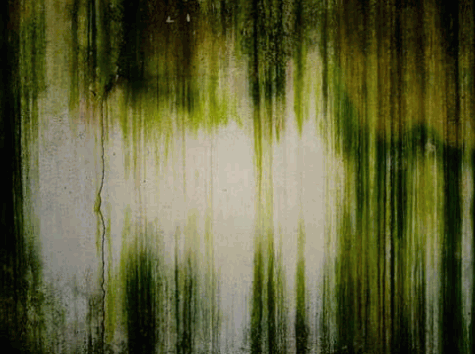
There are three main types of algae, but without a doubt the two most common are green algae and red algae. They'll grow on roof tiles, walls, anywhere they can stick to, really.
If the unsightly stains on your buildings are green, then that's great news. Green algae is much easier to deal with than red algae.
That's not to say red algae is impossible to deal with, because it's not, and professional businesses like ours at Wash Your Walls can deal with any algae growth - and removing algae is a piece of cake for us.
But a green algae problem is always much easier to remove from your render.
Although immediately obvious, some people might not realise that plant life growing up the side of your property is actually an issue. They might not be as immediately jarring as algae or mould, for example, but plants can damage your render. Fast.
Even if you think plants are improving the aesthetic appearance and first impression of your home, your walls will be affected by it negatively, and you could incur additional costs if you need to replace even a small area of render due to plant damage.
Ivy and other types of wall growing plants might not pose the same threat visually to your home as algae, for example, but it's removal is no less important.
The risk to your property is considerable when climbing plants like ivy start to root their way into the rendering, causing cracks, damage, and eventually structural problems to the building itself.
But don't worry, ivy and plant life removal is fairly common practice and not nearly as complicated as some people believe.
Moss might come under the category of plant life for some people, but really it's an issue all of its own. Moss is common on roof tiles because it loves cool, damp environments with just enough moisture to help it grow.
Unfortunately, it's becoming more common to find moss growing on buildings and rendering nowadays as popular building materials like k rend, monocouche, etc., are prone to creating environments that are just perfect for mosses to grow.
Leaks may be an issue here, as might the heat in your home. In fact, mosses are most common with old, tired buildings that have been left abandoned for some time, but if the conditions on the outside of your home are just right, then it's not uncommon to see this type of growth.
Thankfully damage to your roof and wall is unlikely, but the colour of your render will certainly be affected.
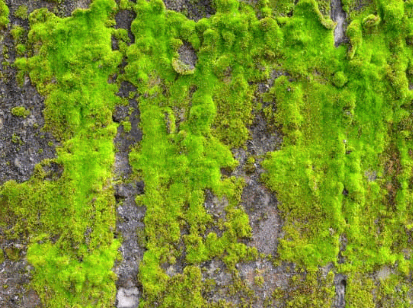
Another type of organic matter you might find during render cleaning is mould - green specifically. To remove stains caused by mould can be a little tricky, but with the right render cleaning process, it will be fine.
Mould, as many of you know, most commonly starts to grow and cause stains where a property is dealing with moisture problems. Damp walls sodden with moisture are a breeding ground for moulds, and they can stick to anything - paint, render, concrete, brick. We also offer brick cleaning as a service.
As soon as mould spores have taken hold of a property and worked its way into the pores of the render itself, it will stay there if left untreated.
If moisture and condensation problems are natural in your area because of the environment (e.g. you live by the sea), then you might think fighting mould is an impossible task. But don't worry, with regular cleaning and the right chemicals to prevent regrowth, you might never have visible mould ruining the look of your buildings again!
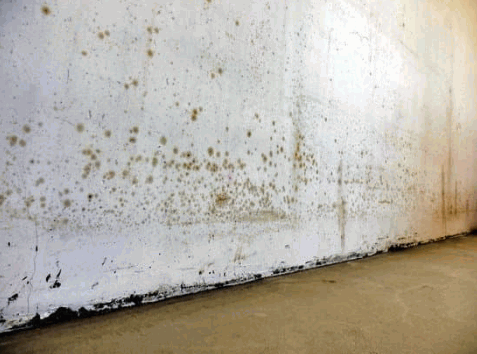
Green fungi is another potential issue you might face on your property, although admittedly it is probably the least common growth we come across during render cleaning.
Much like algae, mosses, and moulds, fungi love moisture and if there is moisture and a solid surface to grow on, it will. That's why fungi are so common around trees in nature.
Just like the other types of organic growth we've talked about so far today, fungi can also be removed from any popular building material with ease - including your render. Due to the lack of pollution in our environment today, it's much easier for fungi to grow and stay around, so taking action is important if you want to clean up your render surfaces and make them look great again.
Fungi is also common on a range of outdoor surfaces - your roof, concrete, brick, render, paint - so be on the lookout for it so you can tackle it as soon as an issue occurs.
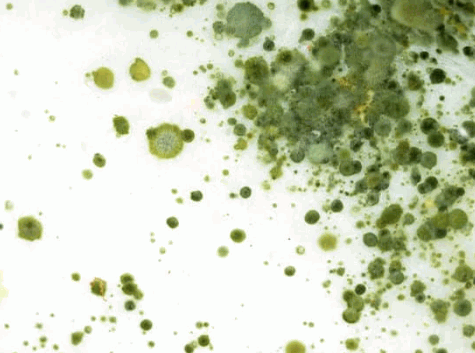
You can probably already guess why organic growth grows based on what we've discussed so far: moisture. Any damp surface is perfect for growths like algae, mosses, and moulds, because they need a steady stream of water to survive.
Now, you're probably going to point out that outdoor surfaces are outdoors surfaces, so there's nothing you can do about the amount of moisture a render surface is exposed to every day. And you'd be right.
But with the right render cleaning process, you can not only remove algae and other biological matter from your home, but the removal can leave your surface free of regrowth for up to three years (environment depending).
How? Well, we'll explain all that below...
There are many ways you can carry out render cleaning for removing algae and other organic growth problems from a render surface, but there are two main options that will be suitable for almost any organic growth issue:
So, if you're tired of your home being covered in organic growth, that's ruining its look, then here's how Wash Your Walls could help...
Steam cleaning involves the use of very little water, low pressure, but HIGH HEAT. This effectively kills any organic growth on the surface of the render fast, and can even help prevent regrowth (although our next option is best for that).
Steam cleaning is perfect for those who are wanting help with removing algae growth and other organic growth from your render surface, but who want to do so naturally.
There are no chemicals here, just high heat, steam, and a very effective cleaning method.

Our second option isn't as natural (so eye protection and protective gear is a must), but biocide is one of the most effective ways at removing algae growth and other types of organic growth from render.
This cleaning process involves spraying your walls with a mixture of water, low pressure, and biocides (algaecides, fungicides - whatever is required based on the problems you're having) to remove the growth.
The benefit of using biocide is that your render cleaning effectively becomes maintenance free after that point. Regrowth will be prevented for some time - depending on your environment it could be up to as long as three years before you notice any other problems.
So whether it's concrete, render, paint, or bricks, if you've got green stains or green growths on your roof or walls, a biocidal wash may be necessary for render cleaning to improve the look of your home again.
If you opt for biocide during render cleaning, then you can simply prevent your render and roof from going green again by leaving it alone. The biocide will take care of it for you.
But if you opt for steam cleaning, you can still keep your render free of any green marks by simply staying on top of render cleaning. Wash Your Walls (see what we did there?) frequently enough, and you won't notice green render problems at all!
Washing your walls isn't fun for most people - but it is for us! We LOVE render cleaning, so if you have noticed green staining and want to fix it, reach out to us today. We'd love to help you solve your render problems!
© Copyright 2024 www.washyourwalls.uk